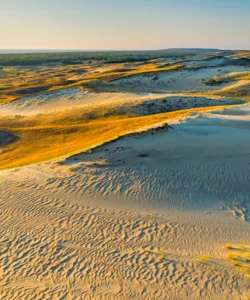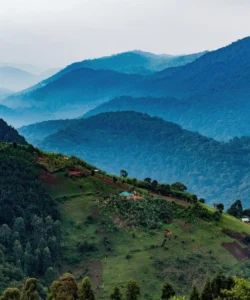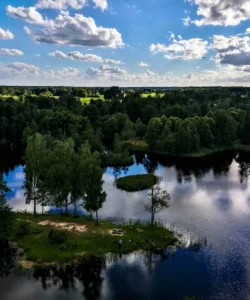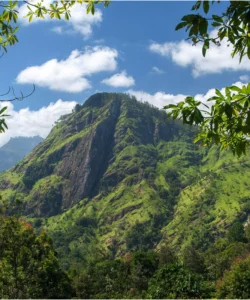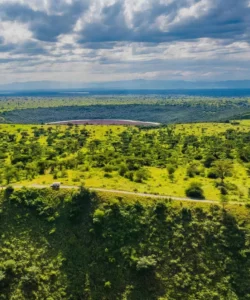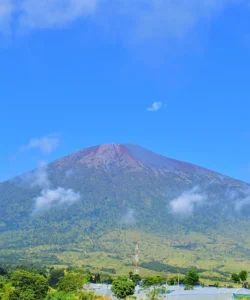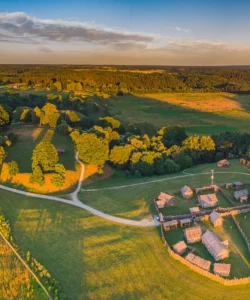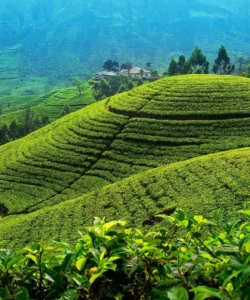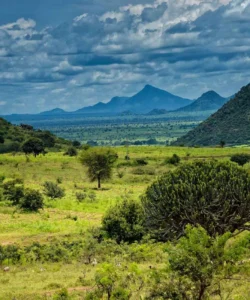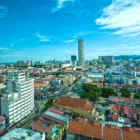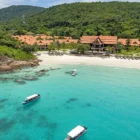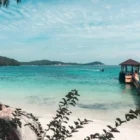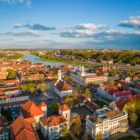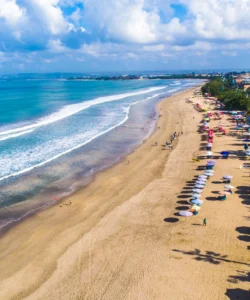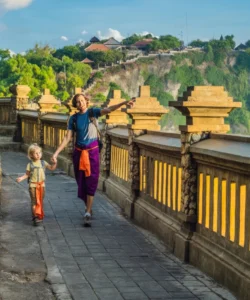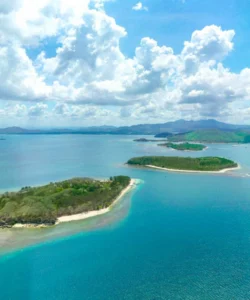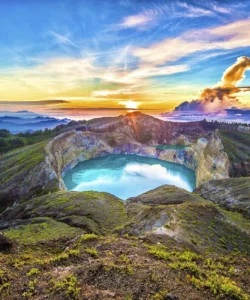Tegalalang Rice Terraces is a stunning natural and cultural landmark in Bali, Indonesia, famous for its picturesque terraced rice paddies that cascade down the hillsides. It offers a quintessential Balinese landscape, showcasing the island’s ingenious traditional irrigation system and timeless agricultural practices.
Name: Tegalalang Rice Terraces (also spelled Tegallalang)
Address: Jl. Raya Tegallalang, Tegallalang, Kec. Tegallalang, Kabupaten Gianyar, Bali 80561, Indonesia.
They are located in the Gianyar Regency, approximately 10 kilometers (6 miles) north of Ubud, Bali’s cultural heartland.
How to Get There:
Tegalalang is a popular day trip from Ubud or other parts of Bali, and transportation options are plentiful:
- From Ubud (Most Common Starting Point):
- Scooter/Motorbike Rental: This is a very popular and flexible way to explore Bali, allowing you to ride directly to Tegalalang.
- Taxi/Ride-Hailing Apps (Grab/Gojek): Easily available in Ubud for a direct ride (approx. 20-30 minutes).
- Bicycle Tour: Many cycling tours from Ubud include Tegalalang as a stop, offering a scenic and active way to experience the countryside.
- Guided Tour: Numerous tour operators in Ubud and other parts of Bali offer half-day or full-day tours that include Tegalalang along with other attractions like Tirta Empul Temple or coffee plantations.
- From Other Parts of Bali (e.g., Kuta, Seminyak, Denpasar):
- Private Car with Driver: Recommended for comfort and flexibility if coming from further afield.
- Taxi/Grab/Gojek: Available, but expect longer journey times (1-1.5 hours or more depending on traffic).
- Entrance Fee: There is a small entrance fee to access the main viewing areas of the terraces, and sometimes additional small donations requested by local farmers if you walk into their specific paddies.
Landscape and Architecture:
The “architecture” of Tegalalang Rice Terraces is not built structures, but rather the masterful man-made terracing of the landscape itself, a testament to generations of Balinese agricultural ingenuity.
- Cascading Terraces: The most prominent feature is the series of lush green rice paddies that descend in dramatic, undulating steps down steep valleys. The terraces follow the natural contours of the land, creating a mesmerizing, undulating pattern.
- “Subak” Irrigation System: The entire system is an active agricultural landscape, powered by the traditional Balinese “subak” irrigation system. This ancient and ingenious cooperative water management system for rice paddies, dating back to the 9th century, is a UNESCO-recognized cultural landscape in Bali. It involves a complex network of canals, weirs, and tunnels that efficiently divert water from natural springs and rivers to the rice fields, demonstrating a harmonious relationship between the community, agriculture, and the natural environment.
- Palm Trees and Lush Vegetation: The terraces are often framed by tall, slender coconut palm trees and other tropical vegetation, adding to the iconic Balinese scenery.
- Valley Setting: The terraces are nestled within a deep valley, providing natural amphitheater-like views.
- Farmers’ Huts and Pathways: You might see simple, rustic farmers’ huts dotting the landscape. Narrow dirt pathways wind through the terraces, allowing visitors to walk down into the paddies and experience them up close.
- Swing and Photo Spots: In recent years, several large swings (“Bali Swings”) have been set up at various vantage points overlooking the terraces, offering thrilling photo opportunities. There are also designated “Love Bali” signs and other decorative elements for tourist photos.
What Makes It Famous:
- Iconic Balinese Landscape: Tegalalang Rice Terraces offer the quintessential and most photographed image of Balinese terraced rice paddies. Its lush green steps are instantly recognizable and widely used in tourism promotions for Bali.
- UNESCO “Subak” System Representative: While not a standalone UNESCO site, it is a prime example and an integral part of the “Cultural Landscape of Bali Province: Subak System as a Manifestation of the Tri Hita Karana Philosophy,” which is a UNESCO World Heritage Site. This highlights its cultural and historical significance beyond just aesthetic beauty.
- Agricultural Ingenuity: It showcases the ancient and highly effective “subak” irrigation system, a testament to the Balinese people’s deep connection to their land, water, and spiritual beliefs.
- Photographic Opportunities: The dramatic contours, changing colors of the rice (from vibrant green to golden yellow), and iconic swings make it a paradise for photographers and Instagram enthusiasts.
- Accessible Beauty: Its relatively close proximity to Ubud makes it one of the most easily accessible and popular rice terrace destinations in Bali, allowing for a quick visit or a leisurely exploration.
- Serene Ambiance: Despite its popularity, the terraces retain a peaceful and calming ambiance, especially in the early mornings, offering a tranquil escape from busier areas.
- Swing and Zipline Experiences: The various swings and newer zipline attractions have added an element of adventure and unique photo opportunities, appealing to a broader range of tourists.
Differences from Some Other Wonders:
- Man-Made Agricultural Landscape: Unlike natural wonders formed by geology (Mount Bromo, Komodo National Park) or dense rainforests (Taman Negara), Tegalalang’s “wonder” is entirely a man-made agricultural landscape. Its beauty is a result of human ingenuity working harmoniously with nature for millennia.
- “Living” Agricultural System: It’s not a historical ruin or a preserved natural area (though it’s protected). It is a living, active agricultural system where local farmers continue to cultivate rice using traditional methods, offering a glimpse into a timeless way of life.
- Focus on Rice Cultivation and Irrigation: Its specific fame centers around the unique terraced rice paddies and the “subak” irrigation system, which differentiates it from other agricultural landscapes or general scenic viewpoints.
- Iconic Tropical Agricultural Aesthetic: While rice terraces exist in other parts of Asia, Tegalalang offers a highly recognizable and distinct Balinese aesthetic with its specific contours, palm trees, and cultural context.
- Interactive Photo Opportunities (Swings): The integration of large “Bali swings” and other specific photo props that allow for unique, high-altitude shots overlooking the terraces is a modern adaptation that sets it apart from more traditional viewing points.
- Less about Wildlife: Unlike national parks or game reserves, Tegalalang’s primary appeal is not its wildlife, but its cultivated landscape and cultural agricultural practices.
Tegalalang Rice Terraces Photos:































